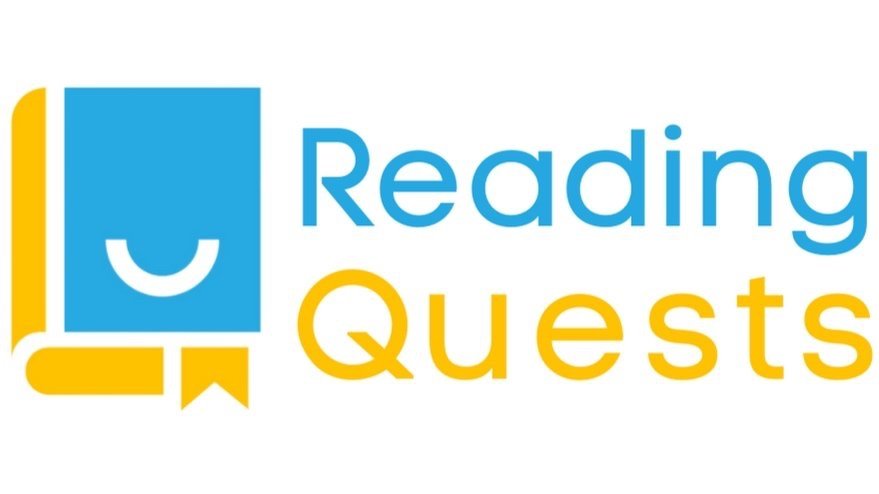If Your 3rd Grader is Struggling With Reading, Watch Out for the “Decline at Nine”
Top 3 Takeaways to Avoiding the “Decline at Nine”
The age of nine is a critical period for kids to continue reading. If they don’t foster a love to read, the impact on future success will be felt through their lifetime.
One way children lose the love of reading is through a rigid and stretched education system.
Through modelling and choice at home, we can make sure our kids don’t lose their love of reading.
Persuading my kids to pick up a book can often feel like a long torturous battle, especially with so many distractions like video games and the internet within arm’s reach.
In my research to find ways to engage a reluctant reader, I came across this article from Scholastic which highlighted troubling findings from landmark research by the Annie E. Casey Foundation. In the Kids & Family Reading Report, it reveals:
Kids need to be reading proficiently by age 9 which is a clear predictor (or not) of academic success.
This age is the same time when children begin reading less for enjoyment.
There is a rare chance of children re-finding their love of reading the older they get.
Yet across ages, the majority of kids agree they should read more books for fun, and believe that reading does matter. This gives us hope that it is possible to prevent the decline and re-engage a child in reading.
To help make heads or tails of this article, I turned to Ian, a high school English teacher and published author for his thoughts and perspective on raising a reader.
Why Do Kids Stop Reading?
So, let’s look at why this decline is happening and what can be done to prevent that love of reading from slipping away in the first place. We’ll also examine proven strategies to re-instill a love of reading for your child.
Self-esteem starts to erode from kindergarten
If you walk into a kindergarten class, you’re unlikely to see many children who “hate” to read. If you walk into a high school classroom, there’s a good chance you’ll see the exact opposite scenario, but why? One reason has to do with children’s self-esteem.
In kindergarten, when all children are learning to read, kids are simply having fun with reading. They don’t see their ability or inability to read as either good or bad.
But as they grow and learn through reinforcement that reading well is “good”, and reading poorly is “bad”, those kids who struggle with learning to read begin to feel bad about themselves.
Often times you’ll see kids who identify themselves as “stupid”, because of their perceived inability to read as well as their peers.
Many kids simply take longer to develop their reading skills than others, but it’s difficult to explain this to a young child. What happens to this struggling reader with poor self-esteem?
Well, one possibility is that they simply refuse to learn to read because they don’t think they can improve. Another common path this struggling reader can go down is one where they learn strategies to “fake” the ability to read by using clues including pictures and what they overhear from their peers.
Often kids can go years fooling everyone around them, just enough to continue through the grades without actually learning to read properly.
Eventually, because of this child’s deficits, teachers may begin to teach them coping strategies, rather than real reading strategies.
This hindrance to self-esteem not only impacts the child’s reading and learning, but will affect how they see themselves in all realms.
A person with low self-esteem is likely to never attempt things they think they are too “dumb” for (say, applying for a dream job), and they are also more likely to engage in unhealthy relationships, as they see themselves not “worthy” of a healthy relationship.
2. Forced Reading
Another detriment to a love of reading is being forced to read specific texts. As humans who want to be seen as individuals, we dislike being forced to do anything. This applies to reading especially.
We can be given a book that we might love, but in a different situation where we’re forced to read it, we might view it through a negative lens.
Another common occurrence is that kids are forced to read texts which they absolutely despise, they can’t connect to the text, the reading might be too challenging or so easy it’s boring. The list of possibilities is endless for why students don't read books.
But first, let’s look at why children are forced to read texts in the first place:
Lack of resources:
Often, teachers are constrained by their very fixed budgets. An English department – or English budget item – is far smaller than it is for other departments.
The only real expense school boards see in the English department is the books, and that a class set of books should last for years. This obviously discounts the students who don’t take care of their books, but there is a bigger issue here.
Buying a class set of any book ensures that EVERY student MUST read that book. In a class of 30, how many students is that book PERFECT for? Both in terms of interest AND reading level? Best case scenario, I’ll guess five students.
So you might have five students engage in the book, and develop their love of reading and ability, while 10 to 15 students improve their reading ability but hurt their love of reading, and the rest lose both reading ability progress AND their love of reading.
Rigid curriculum standards:
Strict curriculum standards also hampers a teacher’s ability to allow students to read books that are perfect for them. Depending on your school board, state, province, etc., there might be specific books your kids HAVE to read.
In less strict districts, your child might be prescribed a certain reading standard or level, of which their school likely has a limited selection of (again, coming back to the class set issue above).
3. Reading for information:
Sometimes students are forced to read certain texts because their teacher wants to expand their knowledge base. This is an extremely noble approach, but can be done separately from reading to improve reading ability.
For example, if you want students to learn about different cultures, you could either force the entire class to read the same book about one culture.
OR, you could provide five options of books based on different cultures, where students can choose to read about people they are interested in learning about. You can also separate the cultural learning and reading entirely, by teaching students about those other cultures using teaching strategies other than reading.
Now that we’ve learned about the main reasons why kids stop reading and stop loving to read, let’s discuss some ways to help our kids regain a love of reading, or prevent them from ever hating reading in the first place.
Five fun tips on “How to Read for Fun”
Now that we understand some of the issues for why kids don’t enjoy reading books, you might be feeling discouraged. However, there are plenty of practical and low-cost (money AND energy) ways to help your child get into reading again. Here are some fun suggestions to remind them that reading is fun!
1. Help kids find stories that spark their interests.
Quick test: find two articles online, approximately the same length and reading level. One is about a topic you are deeply passionate about. the other is about something you find extremely boring. Okay, which one was easier to read?
You didn’t need to complete this activity to realize the article about a topic you’re interested in was easier to read. If we read something based on our own interests, our brain can fully focus on the words on the page, rather than wandering while reading about the history of buttons (apologies if button-making is your passion).
So if it applies to us as adults, why wouldn’t it work for our kids?
Go to your local library or bookstore, and help your child find a section of the bookstore/library where they can learn more about their favorite topics. Show them the non-fiction sections, the fiction sections, the magazines, the comics, whatever!
And then, just let them browse. You’ll instil both independence AND some of the wonder of reading.
2. Let kids choose their own books.
As highlighted above, forcing kids to read specific books is one of the quickest ways to kill their love of reading. Let your kids pick their own books! It’s been proven that reading levels improve greatly when children have choice, and if a kid is interested in the topic of a book, and that book is challenging, they’ll be more likely to work through that book, even if it’s difficult!
3. Set aside 15-20 minutes each day to read (outside of school)
This can be reading with your child, or you can have all family members reading independently together in the living room (instead of watching tv). This instils the habit of reading, and is a great time for your kid to read something they truly enjoy. This is a great opportunity to counteract your child inevitably having to read texts they hate during the day while at school.
4. Be a reading role model:
Kids learn by seeing, especially at younger ages. They see you sitting in front of the tv every night, and they’ll do the same thing.
On the other hand, if your kids see you reading, or discussing books with your friends, or even just seeing books around the house, they’ll be more likely to replicate this behaviour. If they see you reading, 9 times out of 10 your kid will ask you about what you’re reading.
This can even be a great opportunity to get your kids to read complex text. If you “sell” your book to them, they’re going to want to read it, even if it’s far beyond their reading ability.
This is how the author of this article read Pet Semetary at age 11, even though he struggled through it (don’t let your 11-year-old read Pet Semetary).
5. Surround children with books
Like in tip 4, having books in your house models how important books are to you, which your children will pick up on. Having books around also exposes your kids to a plethora of different books, some of which they may want to pick up and read.
Maybe they’re not quite old enough for Stephen King, but seeing your copy of The Shining might be a great hook to introduce them to Welcome to Dead House by R.L. Stine!
So there you have it, the hows and the whys of children losing their love of reading, and some helpful tips to grow a reader and how to love reading again!
So don’t get discouraged. It’s always possible to reignite that love of reading, but the earlier the suggestions are implemented, the faster you’ll have many happily ever afters!








